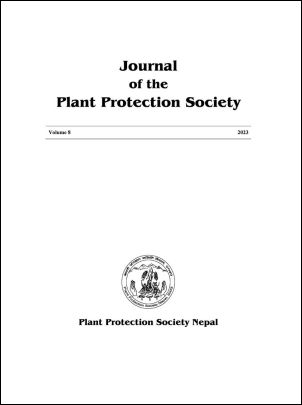Seed Borne Fungal Pathogens Associated with Finger Millet Accessions
DOI:
https://doi.org/10.3126/jpps.v8i1.56448Keywords:
Accessions, fingermillet, samples, seed-borne fungi, seed health testingAbstract
Seed health testing to detect seed-borne pathogens is an important step in the management of crop diseases. A study on the detection and identification of seed-borne fungi was done using seeds of finger millet (Eleusine coracana (L.) Gaetrn) accessions collected from different parts of the country. The research was undertaken to determine different seed-borne fungal pathogens associated with seeds of finger millet accessions from November 27, 2020 to February 25, 2021 at National Agriculture Genetic Resources Centre, Khumaltar, Lalitpur. A total of 85 seed samples, collected from different parts of the country, were used for the research. A hundred seeds of each sample were tested for the presence of seed-borne fungi using the Deep Freeze Blotter method following the International Rules for Seed Testing Association, 2001, and identification was done based on the growth habit, and morphology of the spores observed. One or more pathogens were detected in 65 out of 85 samples. Four different pathogens, namely Bipolaris nodulosa, Alternaria spp., Cladosporium spp., and Pyricularia grisea were identified. B. nodulosa and Cladosporium spp. were predominant in most of the samples with seed infection in 42 (49.4%) and 40 (47.05%) seed accessions, respectively. Hence, it is highly recommended to undertake focused research on the economic significance of the seed-borne fungi, while considering their impact and effective management strategies in order to enhance seed health management.
Downloads
Downloads
Published
How to Cite
Issue
Section
License

This work is licensed under a Creative Commons Attribution-NonCommercial 4.0 International License.
© Plant Protection Society of Nepal

